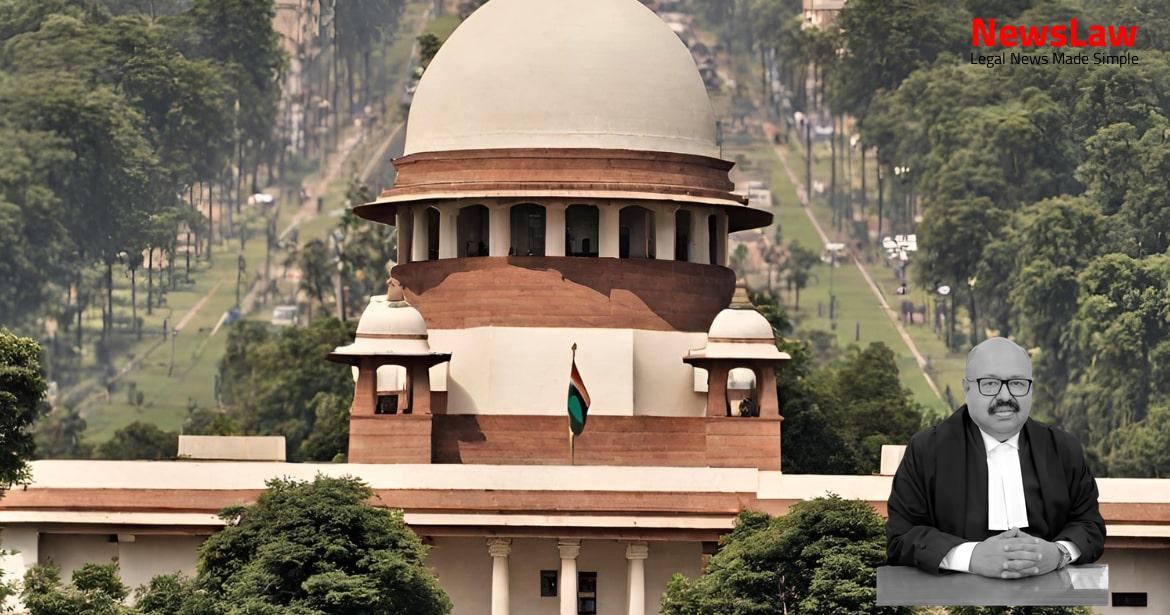Explore the detailed legal analysis conducted by the court regarding the interpretation and binding nature of settlement agreements in employment disputes. The case delves into intricate matters such as contractor-employee relationships and the implications of settlements reached during conciliation proceedings. Discover how the court’s reasoning highlights the importance of legal precision in resolving industrial disputes.
Facts
- The Central Government issued a reference order on 18 September, 2017 in relation to a dispute arising from a direct action notice dated 26 August, 2016.
- Conciliation efforts were initiated by Conciliation Officer P.D. Sunny on 19 September, 2016.
- The High Court rejected a writ petition related to this dispute on 29 January, 2019.
- Workmen were employed by various contractors appointed by ONGC and had certain demands related to wages and allowances.
- Multiple memoranda of understanding were previously established between ONGC and different unions representing contract workers.
- Dispute was referred to the Tribunal by the Central Government and registered as CGIT No.2/40 of 2017.
- Conciliation records were transferred to Dr. S. Gunahari, Regional Labour Commissioner.
- ONGC’s position was that the workers in question were employees of contractors, not ONGC itself.
- ONGC claimed to have reached a settlement with the majority of contractor workmen, which should apply to all similar workers.
- Respondent no.1’s demand was for contractor employees’ wages and conditions to be on par with ONGC’s regular employees.
- During conciliation, a Full and Final Settlement was questioned by respondent no.1.
Also Read: Reversal of High Court’s Decision on Auction Sale Confirmation
Issue
- The issue being discussed is whether the settlement of 19 September, 2016 was binding on the Unions
Also Read: Interest Compensation Dispute in Property Demolition Case
Arguments
- Mr. Cama argued that the High Court’s finding was perverse and requested the intervention of the Supreme Court under Article 136 of the Indian Constitution.
- He relied on various previous court decisions to support his argument that contractor’s workers do not automatically become employees of the principal employer.
- Mr. Cama pointed out that the settlement of September 19, 2016, did not cover all the employees of contractors and had procedural aspects pending.
- The objection on jurisdictional grounds raised by the Tribunal was rejected as the workmen in question were not directly employed by the appellants, according to Mr. Cama.
- The settlement of September 19, 2016, was contended to not be applicable to the workmen represented by the three Unions in the appeal.
- There were discrepancies in pay and allowances between two categories of contract employees as seen in various settlement agreements from 1992 onwards.
- Mr. Cama primarily argued based on the definition of workmen in Section 2(s) of the Act and cited relevant case laws to support his position on contractor-employee relationships.
- The Unions represented by Mr. Pallav Shishodia and respondent no. 1 claimed that the workmen were actually employees of the appellants and not just contractors’ employees.
Also Read: Legal Interpretation of Extension of Judicial Member’s Term
Analysis
- The Tribunal and the High Court found that the settlement of 19th September 2016 did not bind the workmen whose cause was espoused by the respondent Unions.
- The Tribunal’s finding on the settlement was upheld by the High Court, indicating that the decision was not tainted by perversity.
- The Tribunal examined the issue thoroughly and returned a valid finding, as affirmed by the High Court.
- The dispute referred to in the order of reference pertained only to workmen employed by the appellant Company.
- The arrangement made on 19th September 2016 was deemed not to be a settlement within the meaning of Section 18(3)(d) of the Act, and thus not binding on the workmen involved in the specific dispute.
- The settlement of 19 September, 2016 is not binding on the minority Union as per the law.
- Any irregularity or illegality by a Tribunal that affects its jurisdiction can be corrected by a superior court.
- The settlement is not considered just and fair, as found by the Tribunal.
- Even if a settlement is accepted by some workers, it does not automatically make them parties to the settlement under Section 18 of the Industrial Disputes Act.
- The appellants did not contest the jurisdiction of the tribunal, so the matter cannot be further scrutinized.
- The order of reference dated 17-2-1993 was previously referred to.
- The judgment also mentions the case of Mukand Ltd. vs. Mukand Staff and Officers’ Association (2004) 10 SCC 460.
- The specific part of the judgment emphasizes on the aforementioned order of reference.
- Settlements and awards are binding on parties involved.
- Settlements reached outside conciliation proceedings are binding on the parties of the agreement.
- Arbitration awards that are enforceable are binding on parties who referred the dispute to arbitration.
- Settlements reached during conciliation proceedings, arbitration awards under specific conditions, and awards from Labor Courts, Tribunals, or National Tribunals are binding on all parties to the industrial dispute, summoned parties, employers, employees, heirs, successors, and new employees related to the dispute.
- Relationship of employer and employee is a question of fact.
- Determining this question depends on various factors.
- Writ courts typically do not delve into such factual questions.
- The High Court in this case has also followed a similar approach in not deciding on the employment relationship issue.
Decision
- The appeal is dismissed and the impugned judgment is upheld.
- The tribunal will schedule hearings and decide the reference accordingly.
- Interim wages will be provided until the reference is disposed of on remand.
- The tribunal is requested to prioritize and expedite the determination of the reference within eight months.
- Limited interference principle applies to proceedings under the 1947 Act.
- Any interim orders in place will be dissolved.
- Other applications, if any, are disposed of.
- The writ petition is disposed of by setting aside the operative order and remitting the reference for a fresh decision.
- The reference CGIT-2/40 of 2017 is remitted to CGIT-2, Mumbai for a fresh decision on wage scales.
- No costs are awarded.
Case Title: M/S. OIL AND NATURAL GAS CORPORATION LTD Vs. THE PRESIDENT, OIL FIELD EMPLOYEES ASSOCIATION (2022 INSC 145)
Case Number: C.A. No.-001033-001033 / 2022



